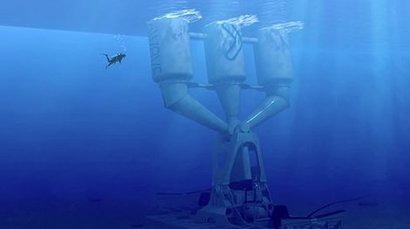
The project consists of a pilot bioWAVE unit which will be deployed 6 kilometres west of Port Fairy in Victoria, Australia. The device consists of a 26 metre high steel structure that sways back and forth below the surface of the ocean across an arc of up to 40 degrees. The oscillating motion of the device activates opposing hydraulic cylinders which in turn forces the pressurised hydraulic fluid to spin a 250 kilowatt generator which then produces electricity. This will be transported to the Victorian electricity grid via a subsea cable.
The $21 million pilot project is designed to test this technology in the high wave environment of the Southern Ocean, with funding from both the Victorian and Commonwealth governments. Once commissioned, the device is expected to operate for a 12-month period before being decommissioned. Periodic maintenance and testing will be carried out on the device during this period, which will be followed by an independent assessment of its performance.
The pilot project will generate key data for the design of a larger 1 MW commercial-scale bioWAVE unit during the next phase of development. This will be deployed for utility-scale power production. The bioWAVE has been designed to absorb energy both at the surface and below the surface. The prototype will operate at a depth of 30 metres but the 1 MW commercial model will operate at 40 to 45 metres.
For additional information:

